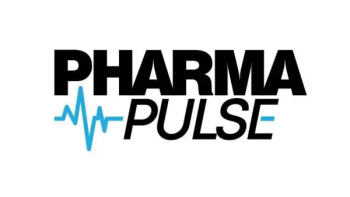The pharmaceutical industry has been anxiously standing by, waiting on the possibility that tariffs on imports entering the United States could take effect, just not at this potential level.
There had been talks over the past few months that a possible 25% tariff might impact the sector, but yesterday, President Trump noted that import taxes of up to 200% could come forthcoming according to CNBC.1
Timeline for tariff implementation and trade policy volatility
During a cabinet meeting, he noted that these fees would not go into effect immediately, but rather, in a year or year and a half. More information on specifics is expected to come by the end of July.
However, it’s important to note that this can change over the course of the next few weeks—since April, the greater industry is aware that tariffs on Canada, Mexico, China, and Japan (just to name a few) have fluctuated. And on Monday, enacted a multitude of tariffs expected to go into effect on Aug. 1, including a 25% import tax on both Japan and South Korea, along with new taxes on a dozen other nations.2 This was in response to a 90-day negotiating period on country-specific US tariffs set to expire today.
“If for any reason you decide to raise your Tariffs, then, whatever the number you choose to raise them by, will be added onto the 25% that we charge. Please understand that these Tariffs are necessary to correct the many years of Japan’s Tariff, and Non Tariff, Policies, and Trade Barriers, causing these unsustainable Trade Deficits against the United States,” Trump mentioned in a letter to Japanese Prime Minister Shigeru Ishiba.
Key Takeaways
- President Trump has proposed tariffs of up to 200% on pharmaceutical imports, which could take effect within 12 to 18 months, significantly surpassing earlier estimates and raising alarm across the pharma sector.
- If implemented, the tariffs could increase US drug costs by nearly $51 billion annually, potentially raising prices by up to 12.9%, according to PhRMA-backed analysis.
- Pharma companies are ramping up reshoring efforts, but experts warn that without existing infrastructure, domestic manufacturing expansion will take years, posing major challenges for supply chain stability and cost control.
Economic strategy: Tariffs, reshoring, and fiscal reform
Trump believes that these lives are necessary to not only help guide the reshoring of manufacturing efforts, but help to financially support the “Big, Beautiful Bill” he signed on the Fourth of July.2 The bill is an extension of his 2017 Tax Cuts and Jobs Act, and makes most of the tax cuts long-lasting, while raising spending for border security, defense, and energy production.
Pharma tariffs could spike drug prices and challenge supply chains
If these pharma tariffs are indeed enacted, it could raise drug costs in the United States by nearly $51 billion annually, and also increase US prices by as high as 12.9%, according to a report commissioned by the trade association, Pharmaceutical Research and Manufacturers of America (PhRMA).2
Companies accelerate reshoring but face infrastructure hurdles
Many may be aware that companies like Regeneron, Roche, Merck, and Thermo Fisher have already been working to reshore manufacturing to the United States in an effort to sidestep steep tariffs, but this process could take years without existing infrastructure in place.2 While the benefits are clear, building out the necessary infrastructure for domestic production can take years if it’s not already in the works.
Pharma Commerce sat down Brad Stewart, BDO’s national life sciences co-leader, to discuss these exact challenges that tariffs may pose to reshoring manufacturing services in the life sciences industry, while digging into the strategies that pharma leaders can use in order to start shoring up their supply chains.3 He highlighted the complexity of supply chains in this sector, which are large, long, highly-regulated, and slow to change. Given that future administrations may alter tariff policies, reshoring decisions need to account for the potential reversal of these changes. While it can come a high price, prioritizing US-based manufacturing capacity can help de-risk supply chains, particularly as tariffs and uncertainty continue to affect global operations.
“The easiest point for most life sciences companies now may be just to minimize risks like that,” Stewart said. “If I can move some of that capacity back in the United States, look to do more of the work here so that I'm not worried about what the taxes or tariffs or anything else may be going forward, those are just things that allow me to focus on my core business of making products to help save people's lives. I think the other thing ... is that it’s a much more expensive thing to do, but I certainly think it makes sense if anyone's planning on building new capacity to very seriously consider doing that in the United States.”
Stay tuned to Pharma Commerce for the latest tariff updates.
References
1. Constantino AK. Trump threatens to impose up to 200% tariff on pharmaceuticals ‘very soon.’ CNBC. July 8, 2025. Accessed July 9, 2025. https://www.cnbc.com/2025/07/08/trump-threatens-pharmaceutical-tariffs-200.html
2. Saraceno N. Trump Imposes 25% Tariffs on Japan, South Korea, and a Dozen Other Nations Pharmaceutical Commerce. July 8, 2025. Accessed July 9, 2025. https://www.pharmaceuticalcommerce.com/view/trump-imposes-tariffs-japan-south-korea-dozen-other-nations
3. Saraceno N. The Case for Reshoring Manufacturing to the United States. Pharmaceutical Commerce. March 10, 2025. Accessed July 9, 2025. https://www.pharmaceuticalcommerce.com/view/reshoring-manufacturing-united-states






